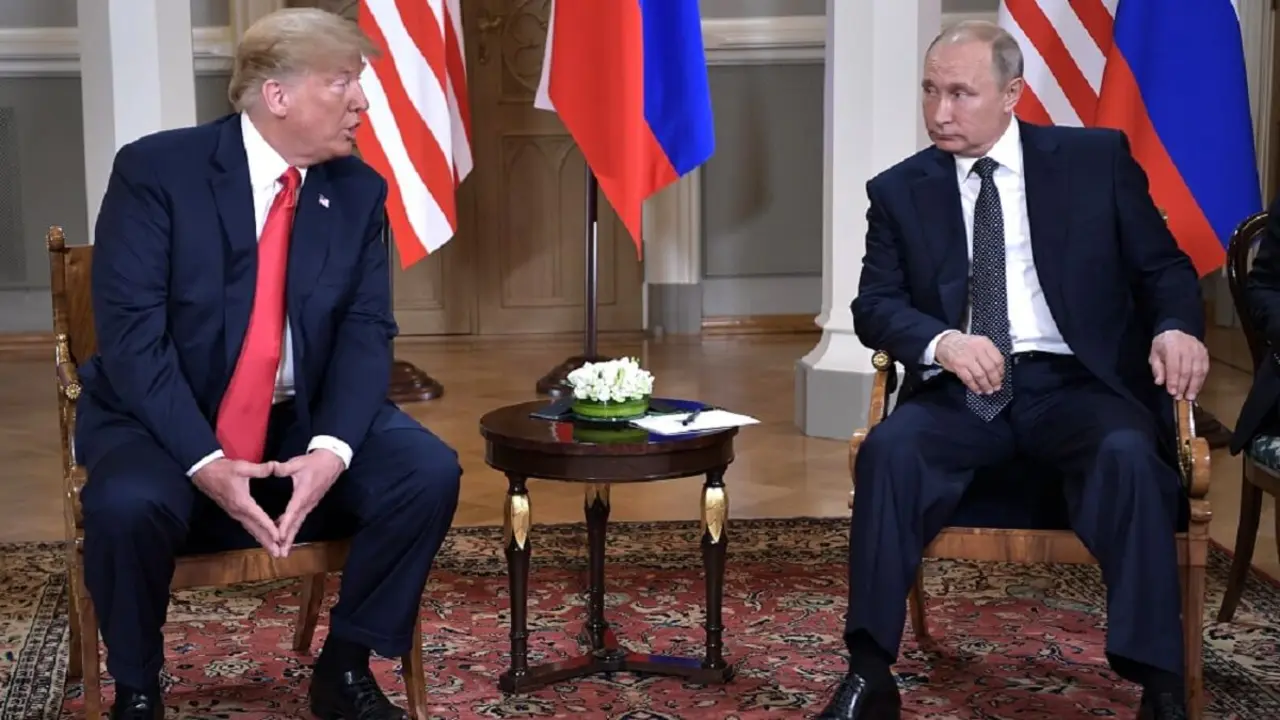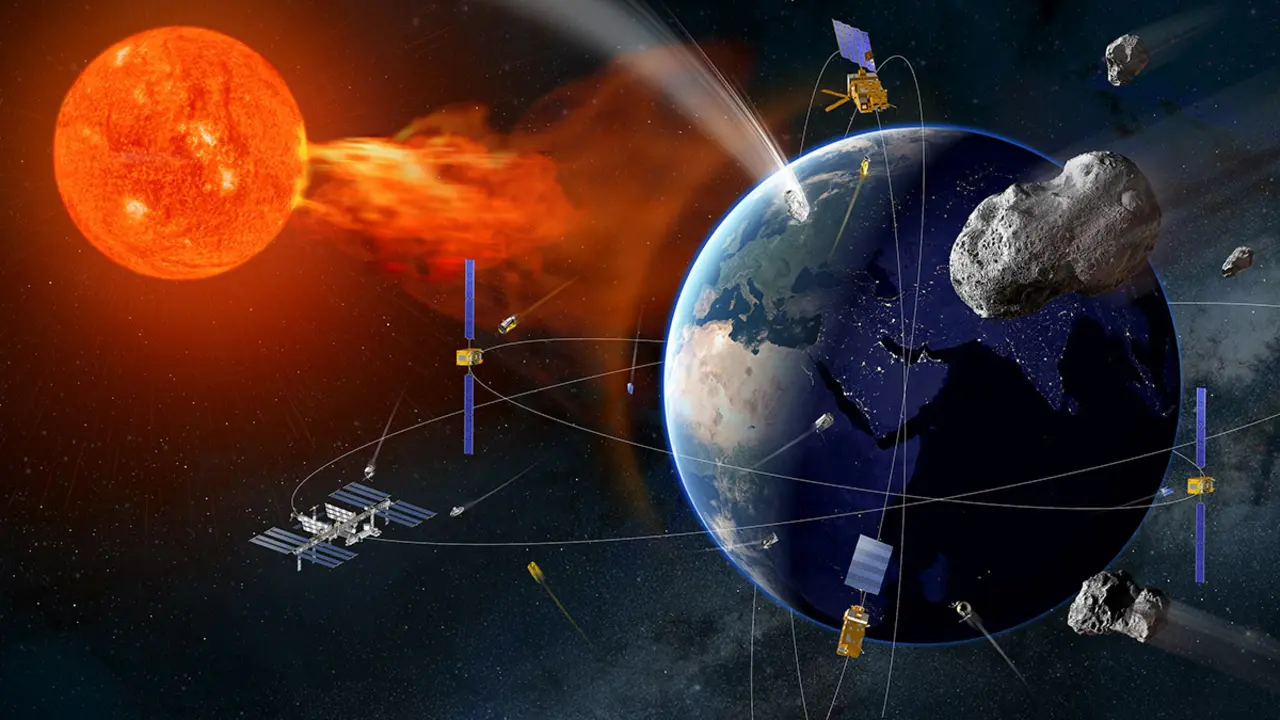The unseen and unknown electronic war in Ukraine

It is a real but intangible force. It does not have the visual or emotional impact of the explosions caused by missiles, rockets, bombs and artillery shells, or the destruction caused by machine gun and rifle bullets. And it does not devastate civilian and military buildings or infrastructure, nor does it cause fatalities and injuries because it only penetrates walls and ramparts. But its effects are devastating.
In the military lexicon it is Electronic Warfare (EW), which goes unnoticed by the layman because it is carried out on invisible waves that do not destroy anything palpable. That is why it does not attract the attention of photojournalists and special envoys from newspapers and magazines, let alone television cameras.

However, contemporary armed conflicts are also fought in the domain of signals and codes that travel through the immaterial electromagnetic spectrum, so it is useful to know what EW is and what it is for. In essence, electronic warfare is the set of military actions that use electromagnetic energy - from radio waves to gamma rays - to attack an enemy and take control of its radiation.
These are mostly voice, radio, radar and microwave transmissions, over which information, intelligence, data, images, orders and reports flow. Because of their disruptive effect on the chain of command and control, everything that involves EW systems bears the stamp of top secrecy. This is the case in Russia, Ukraine, the United States, China... and also in Spain, which has the 31st Electronic Warfare Regiment in El Pardo (Madrid).
In the Ukrainian conflict, General Valeri Gerasimov, 65, Chief of the General Staff of the Russian Armed Forces, has ordered his combat units to be supported by specialised EW Battalions and Brigades. With total superiority over Ukrainian forces, their missions include jamming, neutralising and blocking enemy HF, VHF and UHF transmissions.

But blocking an area "cannot be done permanently", says a senior Spanish army officer who prefers to remain anonymous. The solution is, at key moments, to "emit signal disturbances of 50 kilowatts for about five minutes and form a kind of barrier".
Russian EW units are searching for signals emitted by President Volodymir Zelensky's counter-battery radars and defence electronics to prevent them from functioning properly. They are trying to degrade, blind or falsify emissions over Ukrainian territory from GPS (American), GLONASS (Russian), Galileo (European) and Beidou (Chinese) navigation and positioning systems in order to make it difficult to monitor the trajectory of short- and medium-range missiles deployed in the theatre of operations.

Before leaving Ukraine at the end of February, inspectors from the Organisation for Security and Cooperation in Europe (OSCE) confirmed the presence of at least a dozen Russian EW systems, mostly mounted on tracked vehicles and off-road trucks. Among them is the RB-341В "Leer-3" electronic warfare system supported by Orlan-10 drones, whose job is to intercept satellite navigation signals, 3G, 4G communications and text messages.
General Gerasimov has also brought to Ukraine the R-934B "Sinitsa" jamming station, dedicated to disrupting and even damaging the communications and guidance systems of satellites in low-Earth orbit. And Russia's most advanced electronic suppression system, the RB-301B "Borisoglebsk-2", which blocks Ukrainian military ground and airborne HF and UHF radio channels. And also the RB-636 "Svet-KU", whose role is to locate and intercept radio signals.
For reconnaissance and electronic attack are the 1RL257 "Krasukha-C4" and the R-330Zh "Zhitel" automatic jamming station. Both are aimed at jamming and jamming at long distances the radar signals of the US Air Force's AWACS E-3 Sentry and AEW E-2 Hawkeye airborne warning and control aircraft, which are trying to locate Russian fighters in flight. And the RB-109A "Bylina" and Tirada-2 are used to degrade and jam communications satellite transmissions.

PBut since Russia annexed Crimea in 2014, Kiev's defence ministry has equipped itself with a wide range of EW technologies and expanded the number of its electronic warfare units. With US technical assistance, they have increased and improved the quality and capabilities of their countermeasures equipment to jam and confuse Russian precision-guided weapons and military communications.
Among Kiev's new equipment is the Bukovel-AD anti-drone system with a range of about 50 kilometres. It has been developed to provide perimeter protection, block mobile communications and jam the link between Orlan-10 unmanned aircraft and their ground control stations.

Another communications jamming system is the R-330UM Mandat-B1E. It is designed to collect data on broadcast sources and then radiate a jamming signal that interferes with transmissions within a small geographic area. A third is the Anklav system, designed to jam control and telemetry channels used by Russian precision-guided munitions and drones.
President Zelenski is likely to be supported by EW air systems from Washington, which are technologically superior to the Russian ones. These would be the US Army's MQ-1 Gray Eagle and the Air Force's MQ-9 Reapers drones. Stationed at air bases in Romania and Poland and loaded with Intrepid Tiger electronic jammers, both would fly close to the borders with Ukraine to help degrade the communications of the Russian Army and its naval forces in the Black Sea.
The Pentagon would also be supporting Ukrainian EW defence with the RQ-4B Global Hawk strategic drone and the RQ-58 Valkyrie, the latter with CHAMP missiles fitted with high-powered microwave equipment. The CHAMPs are capable of damaging the electronics of the navigation systems, radios and sensors of the Russian columns of combat vehicles enveloping Ukrainian cities without the Russian generals knowing the source of the incursion.

President Zelensky's resistance to the attack by Vladimir Putin's troops is backed by many US companies. Microsoft is advising the Kiev government on how to neutralise Russian cyberattacks. And Starlink, the constellation of satellites 600 kilometres up in the sky, maintains internet connections over Ukraine with download speeds of more than 90 Mbps. The batch of terminals sent to Kiev by Starlink's owner, tycoon Elon Musk, makes it difficult for the Russians to discover their location and intercept them using conventional cyberattacks.









